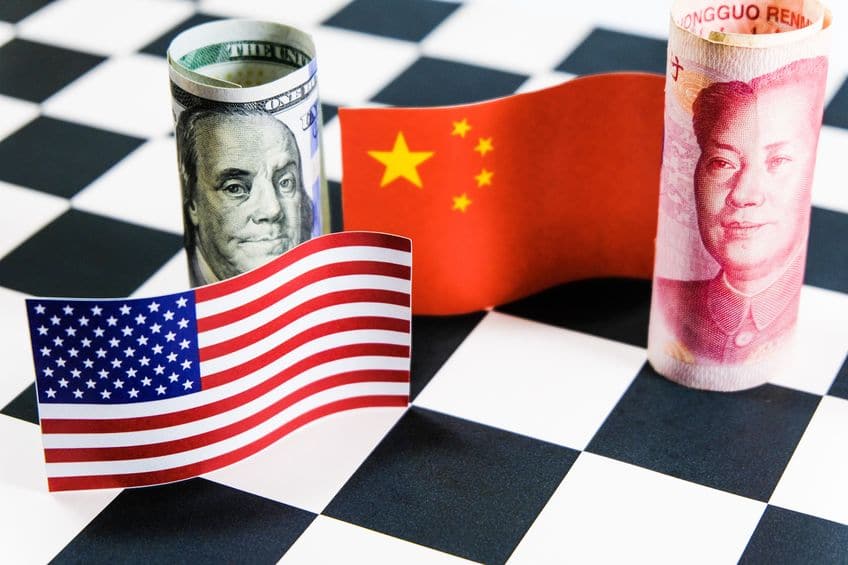So far in the 2020s we have seen a major ongoing shift in corporate supply chains, a trend that started during the pandemic. The manifestations are becoming apparent. Last week, a major milestone was reported: In 2023, Mexico overtook China to become the leading supplier of U.S. imports. U.S. imports from Mexico rose 5% last year to $476 billion while those from China tumbled 20% to $427 billion.
The last time the U.S. was importing more from Mexico than from China was more than 20 years ago, back in 2002.
As LNW CIO Ron Albahary, CFA has been saying for the past several years, shifts in global supply chains reflect shifts in the geopolitical landscape toward increasing regionalization (a “multi-polar world”). Contributing to this are geopolitical conflicts and increasing economic competition resulting in more tariffs and subsidies. This includes the U.S. government encouraging and incentivizing both U.S. and foreign companies to produce more here in the U.S. (“in-shoring”), in nearby countries like Mexico (“near-shoring”) or in allied countries such as South Korea and Vietnam (“friend-shoring”).
—————————————————————————
2023 U.S. Trade Deficit by Country ($Billions)
The U.S. is still running its biggest overall trade deficit (more imports than exports) with China, with Mexico and Vietnam next in line among the top five:
China: $279 billion
Mexico: $154
Vietnam: $104
Germany: $83
Japan: $71
Source: U.S. Bureau of Economic Analysis (BEA)
————————————————————————————
Implications for the United States
As we have been noting in the LNW quarterly Commentaries, the changing geopolitical landscape has major economic implications. For one, spending to build manufacturing plants in the U.S. has soared.
Three separate U.S. Acts signed into law in 2021 and 2022 provide more than $1 trillion in U.S. federal funding, tax breaks and other incentives for new infrastructure projects, green energy initiatives and the domestic production of strategic goods such as semiconductors to reduce reliance on imports, mostly from China.
Between the start of 2022 and April 2023, spending on the construction of new factories in the U.S. more than doubled, to $189 billion. You would have to go back to 2002 to see a bigger increase. In April 2023, factory construction accounted for about 10% of all U.S. construction, the highest percentage since 1993 (from 2010-2022, factories were just 5.7% of total construction spending). Long term, the opening of more factories in the U.S. is expected to create millions of quality jobs and boost economic growth.
With that said, moving production away from countries with lower-cost labor puts pressure on corporate margins and makes price increases more likely.
Implications for Developing Markets
Certain developing nations are benefiting from the shift in global production chains. Having a market weight exposure to emerging markets, which are less tech heavy than the U.S., is an important aspect of diversifying your portfolio especially given that U.S. stock markets are at all-time highs. Below is a closer look at these three countries with supply chain tailwinds:
Mexico: Mexico has been one of the biggest beneficiaries of the shift away from dependence on Chinese factories. Foreign investment into Mexico rose 21% last year even though it was down by 9% for developing countries in general (according to the UNCTD). But that does not mean Chinese companies are not involved, since some Chinese manufacturers have set up factories in Mexico to take advantage of the US-Mexico-Canada Trade Agreement, which allows for duty free trade within North America for many products.
South Korea: Like Mexico, South Korea is subject to lower tariffs because it has a free trade deal with the United States. In December, U.S. imports from South Korea were the highest on record. That month Korea exported more to the U.S. than it did to China for the first time in 20 years, largely due to cars, electric batteries and other parts.
The U.S. government is offering tax credits to buyers of electric vehicles (EVs), but only if the EVs are not created with certain parts from China. South Korea companies are taking advantage of this to become a bigger part of the U.S. automotive supply chain. SK On, a South Korean battery maker, has a $2.6 billion factory in Georgia and is building new ones in Georgia, Tennessee and Kentucky with Hyundai and Ford.
As Korean companies such as SK, Hyndai, LG and Samsung build new facilities to make products in the U.S. that could result in higher U.S. trade with South Korea since companies are importing some materials, machinery and parts from the home country to supply the new facilities.
India: India’s current GDP of $4 trillion could potentially more than double to $10 trillion by 2030 due to the government’s focus on alleviating poverty, increasing the number of women in the labor force (currently at 25%) as well as eliminating structural economic barriers. Over the past 20 years, the number of people in India earning less than $2 a day has dropped to 11% from 40%. These efforts, plus its relatively young population relative to developed economies, are expected to contribute to easing inflation pressures in advanced economies.
Meanwhile, India’s digital sector has emerged as a key driver of productivity, exemplified by a unified payment system connecting households and banks. India’s unique biometric system provides all citizens with a digital footprint, a crucial development considering the country’s transition from a cash-based economy. This transition has allowed the government to track taxes and spending, marking a significant shift from a decade ago when 70% of the population was excluded from banking services.



